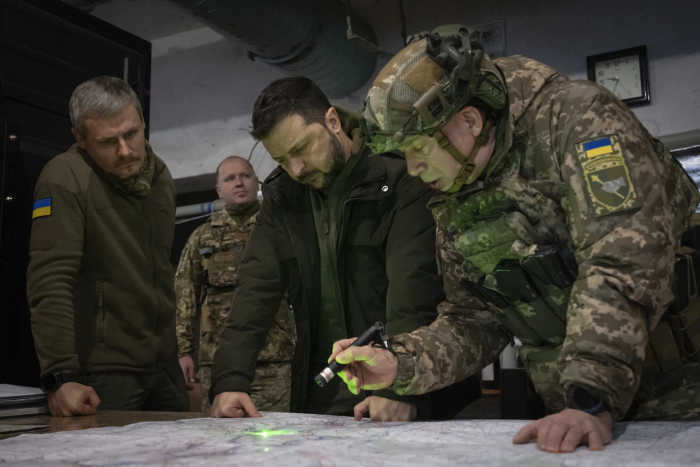Published 20:28 IST, November 18th 2024
In Response to North Korea’s Support for Putin, U.S. Greenlights Deep Missile Strikes by Ukraine
These missiles, with a range of 180 miles, will enhance Ukraine’s ability to strike deep into Russian-controlled areas.
- Defence
- 4 min read
Washington, D.C. — In a significant reversal, the Biden administration has granted Ukraine permission to fire long-range American missiles into Russian territory. This decision allows Kyiv to use the Army Tactical Missile System (ATACMS), which boasts a 180-mile range. The move follows months of debate and resistance from the U.S., which had previously feared that such an escalation would offer limited battlefield benefits.
Since May, when the Biden administration first permitted Ukraine to use American-provided weapons in strikes against Russia, Kyiv has repeatedly asked for greater freedom to target Russian territory with long-range missiles. However, the U.S. had initially resisted granting this request, citing concerns over the escalation of the conflict and the uncertain tactical advantages of such strikes.
This latest shift is part of a broader pattern of changing U.S. policy throughout the war, particularly regarding what types of weapons Ukraine is authorized to use and how freely they can employ them. The White House's decisions on military aid, including the provision of F-16 fighters, long-range missiles, and tanks, have seen similar reversals.
North Korea’s Involvement Pushes Policy Change
The decision to allow Ukraine to use ATACMS is largely seen as a tit-for-tat response to growing Russian support from North Korea. Over the past weeks, North Korea has sent more than 10,000 troops to fight alongside Russian forces, particularly in the Kursk region, where Ukrainian forces recently reclaimed significant territory. While the North Korean troops have yet to see significant combat, U.S. officials expect their involvement in fighting to escalate soon.
-1731941844820.webp)
Secretary of Defense Lloyd Austin told reporters that, although these North Korean troops are inexperienced in combat and will face challenges in working alongside Russian forces, they are expected to help Russia maintain its positions without the need for additional conscription. Russia has been suffering heavy casualties, reportedly up to 1,250 per day, and the inclusion of North Korean forces will help bolster its manpower. Despite this, Austin expressed doubt that the North Korean forces would be highly effective due to the cultural and logistical differences between them and Russian soldiers.
Missile Shortages and Strategic Alternatives
For months, the U.S. had refrained from sending ATACMS to Ukraine, citing several factors. One of the primary reasons was the limited stockpile of the missiles, which led the U.S. to conserve them for other uses. Furthermore, the Pentagon argued that Ukraine had been able to develop its own long-range weapons, such as drones, that could effectively target Russian military sites.
-1731941860455.webp)
Ukraine has already successfully used its own drone capabilities to strike Russian oil refineries and ammunition depots, dealing significant damage to Russian infrastructure. Despite this, the U.S. has maintained that Ukraine would be better off focusing on the use of these indigenous systems, as opposed to relying on limited stocks of ATACMS.
The Impact of the Policy Change
The recent policy change does not signal a belief that the ATACMS will suddenly become a game-changer on the battlefield. U.S. officials have noted that many of Russia’s military assets, including planes, have already been moved beyond the range of the ATACMS in anticipation of such a policy shift. This has reduced the missile’s potential effectiveness, especially given that Russia continues to rely on glide bombs—imprecise but increasingly accurate weapons—that have been hitting Ukrainian cities for over a year.

While the permission to use ATACMS could allow Ukraine to target specific military sites, such as ammunition depots, the U.S. has made it clear that it cannot commit to sending large quantities of these missiles to Ukraine due to stockpile concerns. Moreover, the U.S. has yet to clarify whether this shift in policy applies to long-range weapons provided by other NATO allies, such as Britain and France. Both countries have expressed support for Ukraine’s ability to fire missiles wherever it deems necessary, but they rely on U.S. technology and data to target military sites, giving Washington the final say on how these weapons are used.
Evolving Dynamics in the Conflict
The U.S. decision to allow Ukraine to use long-range missiles against Russian targets is a significant development in the ongoing war. While the shift may not have an immediate and transformative impact on the battlefield, it reflects a growing recognition of the evolving dynamics in the conflict, particularly the involvement of North Korean troops. As both sides brace for future confrontations, the U.S. will continue to balance its limited military resources with the growing needs of Ukraine, whose tactics and strategies continue to adapt in response to Russia’s evolving tactics.
In the coming weeks, the U.S. will likely face additional pressures as the conflict drags on, and further policy adjustments may be necessary as both Ukraine and Russia seek to gain the upper hand in this prolonged struggle.
Updated 20:28 IST, November 18th 2024